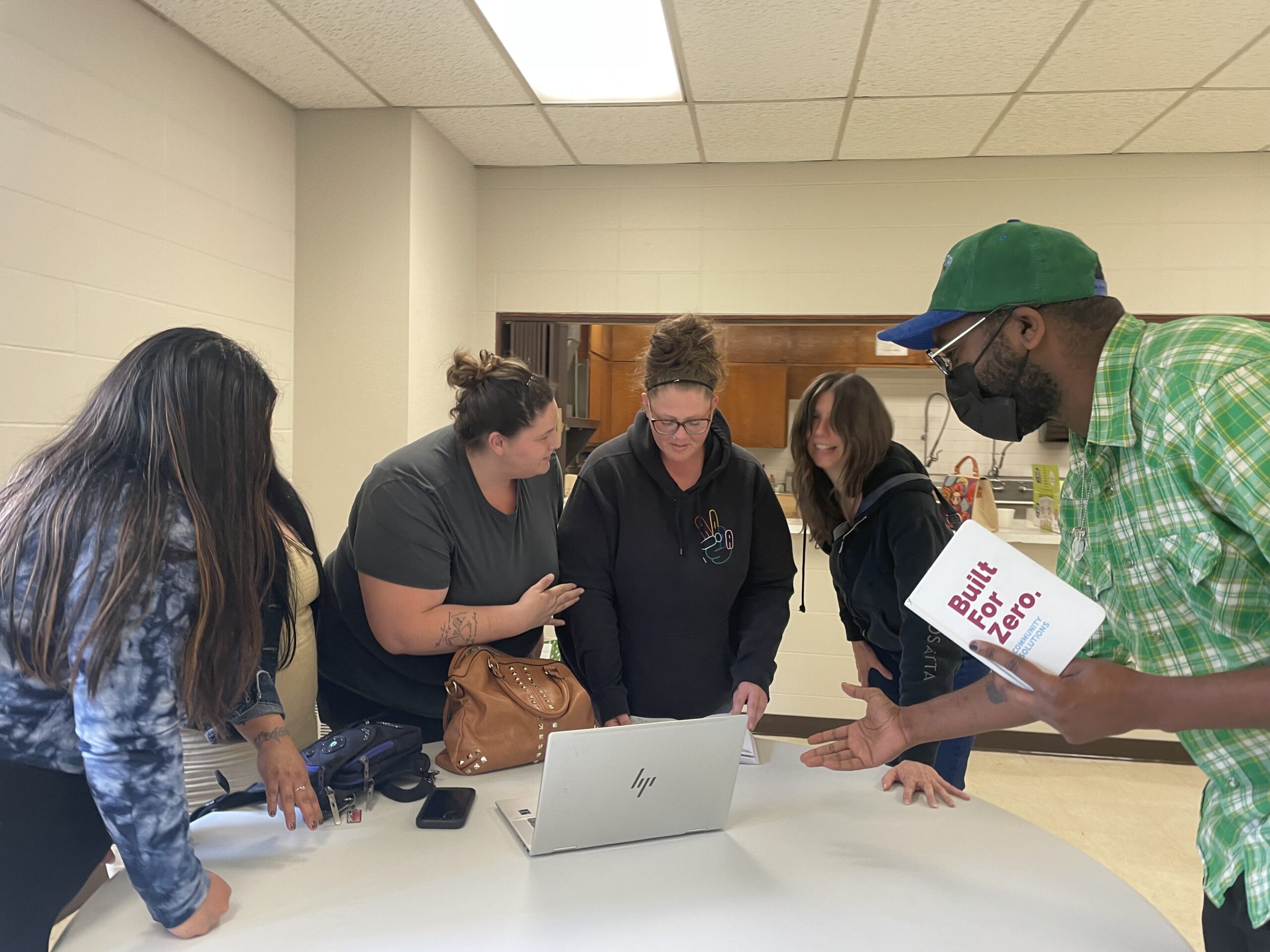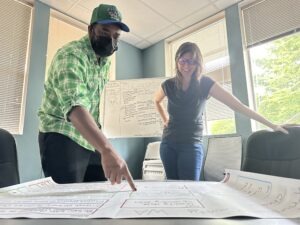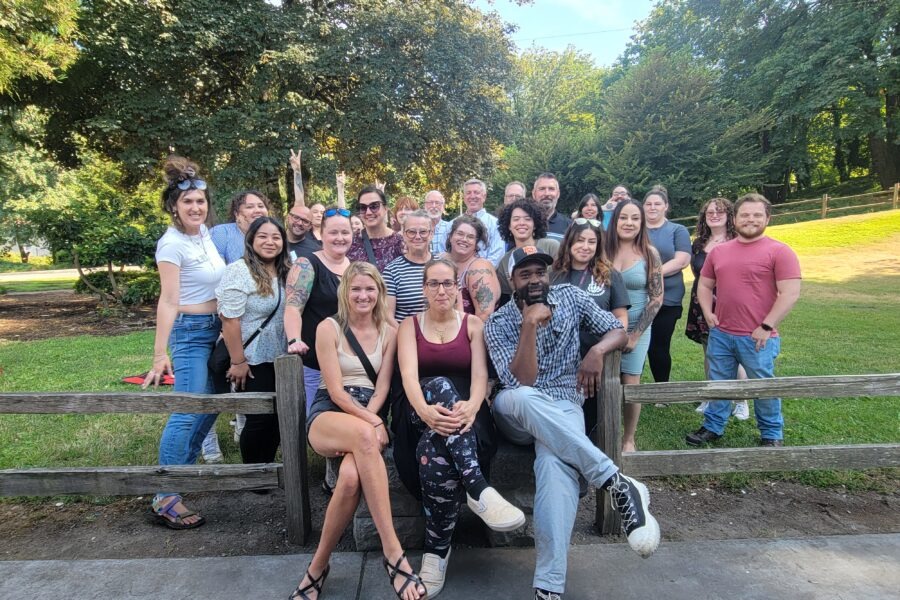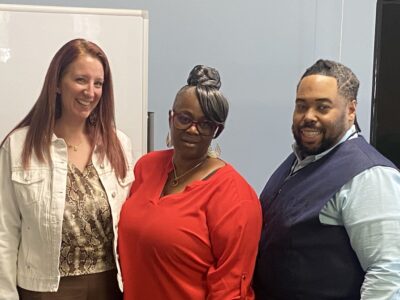In Thurston County, data is more than numbers; it’s the key to transforming the community’s approach to homelessness.
At one time, duplicate records across different service providers complicated efforts to serve people experiencing homelessness. Achieving Built for Zero’s quality data milestone changed that.
“Now we can much more confidently reflect what our numbers are, where they are going, and what’s happening,” said Natalie Skovran, Deputy Director of Family Support Center of South Sound.
This quality data achievement means Thurston County, Washington, has a real-time, comprehensive data source for all single adults experiencing homelessness, including veterans and people experiencing chronic homelessness.
As Jess Olson, former Homeless Program Specialist with Thurston County Public Health and Social Services, noted, “Quality data has clarified the work…. We now have the ability to measure progress in a meaningful way.”

Collectivizing services through increased provider participation
To meet the quality data standard, at least 90% of organizations working on homelessness in the community, including nonprofits, governmental agencies, faith communities, and housing systems, must actively participate in the homeless response system.

“It’s something that, as a county, we’ve intentionally spent a lot of time improving,” said KayVin Hill, Thurston County Built for Zero Coordinator. “We’re helping providers make intentional connections and going to visit them independently to encourage participation.”
Thurston County holds regular case conferencing meetings focused on coordinated entry, housing, and outreach to encourage collaboration across teams working with different populations. Currently, 90% of the 41 providers in the county are connected to the homeless response system, enabling them to refer individuals and access a more extensive network of services.
“We’re ‘collectivizing’ our services,” Hill said. “Now someone working specifically with families can meet a single veteran and say, ‘I have a contact over here, and I will directly connect you with this person.’”
Expanding outreach and streamlining data
To achieve the quality data standard, Thurston County had to ensure that at least 90% of unsheltered individuals were known to the homeless response system. This necessitated a robust outreach and street engagement program to cover the 727-square-mile county, which includes the capital city of Olympia.
The community accomplished this by creating the Greater Regional Outreach Workers League (GROWL), a coalition of 18 outreach partners with members from traditional outreach teams, street medicine, the Department of Health, and anti-human trafficking organizations. GROWL holds bi-weekly meetings to discuss new encampments and hot spots where people experiencing homelessness live.
“There’s been a push to ensure everyone has access to all housing lists they’re eligible for, sharing resources, and believing there’s enough for everyone.”
Alison Waters, Coordinated Entry Data Coordinator at Family Support Center of South Sound
“One historical strength of our community is the dedication of direct services workers in prioritizing those most vulnerable for the placement of resources and especially permanent supportive housing,” Olson said.
When they joined Built for Zero in November of 2021, Thurston County’s homeless response system used separate databases for different populations, like veterans, families, and youth. As more providers joined, the county streamlined data into a single source, the Homeless Management Information System (HMIS).
“We were really trying to strengthen the coordinated entry system, helping providers network with each other and understand the importance of HMIS and data entry,” said Alison Waters, Coordinated Entry Data Coordinator at Family Support Center of South Sound. “There’s been a push to ensure everyone has access to all housing lists they’re eligible for, sharing resources, and believing there’s enough for everyone,” she noted.
Collaborating with victim service providers
By collaborating with more providers and enhancing outreach systems, communities can better support neighbors experiencing homelessness, especially those often underserved. For instance, providers serving people fleeing domestic violence and experiencing homelessness often operate within separate systems due to data privacy concerns, limiting their access to mainstream resources.
However, Thurston County has taken a different approach. The community worked closely with local Victim Service Providers (VSPs) to merge data sets and enroll clients anonymously in HMIS. This integration ensures that clients’ information remains protected while allowing them access to necessary resources. Including data from VSPs also helps Thurston County better understand the overall scale of homelessness in their community in a way that is inclusive of people fleeing domestic violence — which is often a challenge for homeless response systems.
“The question constantly is, ‘How does this benefit the clients? … What’s our commitment to keeping them and their personal information safe?'”
KayVin Hill, Thurston County Built for Zero Coordinator
“The whole idea is keeping someone’s information safe, keeping them safe, and then at the same time, not letting their safety keep them from shelter or housing,” Waters explained.
The county’s efforts focus on the end user, requiring a lot of listening, deliberation, and consideration. “The question constantly is, ‘How does this benefit the clients? If we’re going to involve them in this, then how does this benefit them, and what’s our commitment to keeping them and their personal information safe?’” added Hill.
This dedication to client-centered service means that confidentiality and privacy are upheld while still ensuring access to housing. Skovran emphasized, “You can also hold someone’s confidentiality and their privacy really tightly, and still get them housing, and still get them through the system with informed consent and buy-in — in a way that works for the client.”
Keeping an eye toward equity
As they continue reducing homelessness across all populations, Thurston County remains focused on improving the racial equity of its system. Having quality data has highlighted existing disparities. “We had a perception that marginalized identities in our community were underserved, but now we have the data to prove it,” Hill noted.

Over the last year, the county established the Homeless Services Advisory Board and the Affordable Housing Advisory Board, both designed to include individuals with lived experience of homelessness, frontline staff, and those with overrepresented identities in the homeless crisis response system. These Boards make funding and policy recommendations for the county’s homeless services.
“This is unique and helpful for pushing policies rooted in best practice and making funding recommendations in a thoughtful, holistic way,” said Keylee Marineau, Thurston County Homeless Response Program Manager. “Serving those most marginalized benefits the whole community.”
On the horizon, Thurston County aims to achieve another significant milestone — functional zero for chronic homelessness. All the while, the community continues to prioritize the people they serve. Waters said, “You can put people first and still collect good data.”
The Thurston County team would like to thank all of the community agencies, organizations, and service providers who contribute data to their shared database in the collective work to end homelessness.
Capitol Recovery Center
CARE Olympia
Catholic Community Services
Catholic Community Services – Arrest and Jail Alternatives
City of OlympiaCRU
City of Olympia – Community Court
City of Olympia Familiar Faces
City Of Olympia Homeless Response Team
Community Action Council of Lewis, Mason and Thurston Counties
Community Youth Services
Family Support Center of South Sound
Gather Church
Hope and Healing SUD Support Clinic
Housing Authority of Thurston County
Innovations Human Trafficking Collective
Interfaith Works Supportive Shelter
Interfaith Works – Sergio’s Drop-In Support Center
Lacey Mobile Outreach Team
Lacey Veteran Services Hub
LIHI – Low Income Housing Institute
Love Abounds Here
New Horizons
NorthWest Resources II
Olympia Community Services Office of DSHS
Olympia Mutual Aid Partners
Our Ark Youth
Partners in Prevention Education
Peer Olympia
Port of Support
Providence – Street Medicine Team
ROOF
Sacred Heart Parish
SafePlace
Saint Michael’s Parish
Salvation Army
SeaMar Community Health
South Sound Habitat For Humanity
Supportive Services for Veteran Families
Telecare Community Alternatives Teams/Jobs Center
Thurston Mason Behavioral Health Administrative Service Organization
Timberland Regional Library
Together
Union Gospel Mission
United Methodist Church
Valeo Vocational
Valley View Health Center




